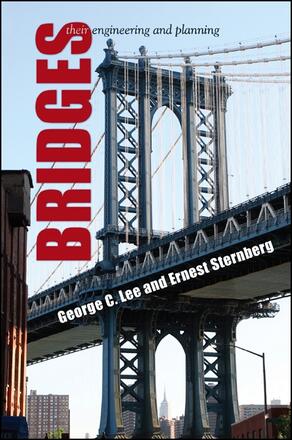
Bridges
Their Engineering and Planning
Alternative formats available from:
A multidisciplinary and accessible introduction to humanity’s favorite structure: the bridge.
Description
Whether you are a student considering a career in civil engineering and transportation planning, a public official interested in the future of infrastructure, or a person who simply cares about bridges, this book offers an accessible and illustrated introduction to the most beloved feature of our built environment. Learn about engineering basics: the forces that bridges must resist to stay aloft and the principles by which engineers decide which types of bridges make sense at which sites. Find out how engineers protect bridges from their greatest threats—the earthquakes, floods, and other hazards that can cause catastrophic damage.
Moving from engineering to planning, learn how we decide whether a bridge is worth building in the first place, learn about controversial features of cost-benefit analysis, and about the transportation models by which planners forecast bridge effects on traffic patterns. Investigate a sometimes intractable problem: why a project often creeps along for a decade or more to get from initial studies to the day the ribbon is cut, undergoing vast cost escalations. Also explore the environmental impact of bridges, and the meaning of a "sustainable bridge," and whether bridges could once again be built, like ancient Roman ones, to last a thousand years.
George C. Lee is SUNY Distinguished Professor of Civil, Structural, and Environmental Engineering at the University at Buffalo, State University of New York. His books include Structural Damping: Applications in Seismic Response Modification (coauthored with Zach Liang, Gary F. Dargush, and Jianwei Song). Ernest Sternberg is Professor of Urban and Regional Planning at the University at Buffalo, State University of New York. He is the author of Photonic Technology and Industrial Policy: U. S. Responses to Technological Change, also published by SUNY Press, and The Economy of Icons: How Business Manufactures Meaning.
Reviews
"The strength of this book is that although the concepts are diverse, surprisingly, the reader does not struggle to make sense of the collection. The book has a clear structure, and illustrations and tables have been used wisely to clarify the ideas of the text. Overall, it can serve as a useful resource for students, citizens, and public officials to learn more about bridge engineering, planning, as well as making infrastructure decisions in general. " — Journal of Planning Education and Research
"Authoritative, comprehensive, and fun to read, this book is for everyone interested in bridges, from the lay reader to the techie who likes to see how things work. It also will serve as an excellent companion to beginning design students in architecture and engineering, and it should be on the shelf of civil engineers, architects, and contractors, too. " — Robert E. Paaswell, City College of New York
"This work will help educated but nonspecialist decision makers to appreciate the complexity of bridge design, construction, and maintenance in making decisions that impact bridges. " — Niraj Verma, Virginia Commonwealth University